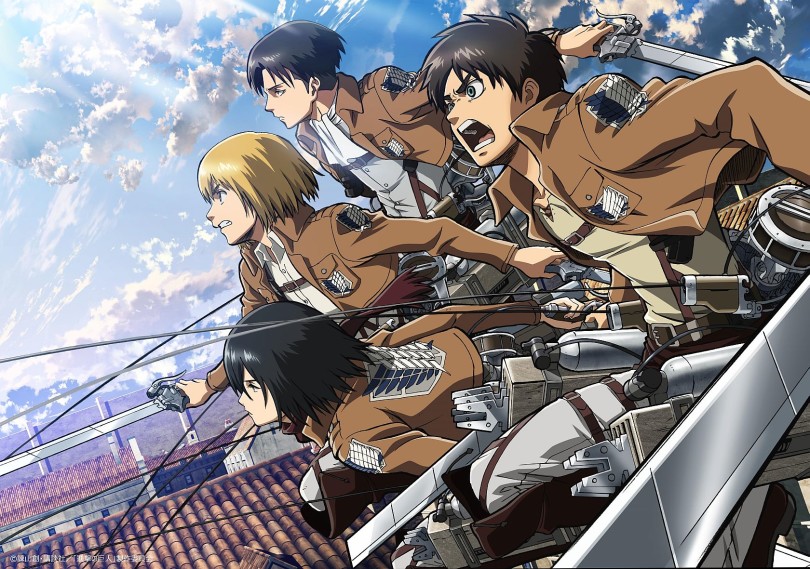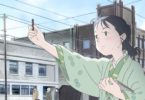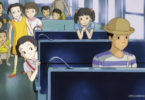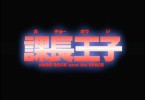“And there we saw the giants, the sons of Anak, which come of the giants: and we were in our own sight as grasshoppers, and so we were in their sight” (KJV, Numbers 13:33).
Recipient of both widespread popularity and intense critical scrutiny (amateur and scholarly alike), Shingeki no Kyojin (Attack on Titan, 2013–) owes its vast international fan base primarily to stunning visuals and universal humanistic themes. Adapted from author Hajime Isayama’s original work of the same name and helmed by seasoned director Tetsuro Araki, the series encapsulates universally appealing themes within a fairly unique approach, and achieves a level of verisimilitude between 2-D and 3-D that, until recently, had remained largely elusive to Japanese animators seeking to incorporate innovative digital techniques within the traditionally 2-D medium of anime (a medium with a rich heritage of cel-based animation in the days of ‘analog cinema’ ). Through the diegetic conveyance of “3-D Maneuver Gear” onscreen characters astonish and enthuse audiences by pulling them along on ultra-fast-paced excursions through three-dimensional urban and woodland environments to battle inhuman foes. While it may be a stretch to assert that the heavy amount of attention lathered onto such aesthetic properties in conjunction with the recurring premise of harnessing three-dimensional space to its full (combat) potential is somehow an esoteric cue or playful prodding at the fourth wall on the part of the production team, what can be stated for certain is that Titan’s visuals are meant to impress—and impress they do, more than adequately.
Bearing in mind that anything premise-wise owes credence more so to Isayama than those behind any adaptation, conceptually Titan is distinct as well, walking the middle ground between innovative and approachable suitable for a series to gain enough footing for mass popularity without succumbing to mindless trend-following or other various forms of uncreative regurgitation (easy traps to fall into within the current climate of adaptation in both Japanese and American markets). Though the notions of man-eating giants, mortal underdogs uprising against larger-than-life oppressors, and mankind’s incessant need of a ‘perpetual other’ are not new, and the camerawork more or less follows the audience-friendly sensibilities first set forth by Classic Hollywood Cinema (CHC) almost a century ago, it is the manner in which these edifices are utilized that contribute to Titan’s distinct identity—the pseudo-steampunk wrapping in which these time-honed themes are encased is attention-grabbing, the skill level required to blend old and new auteuristic techniques is noteworthy, and the effectiveness at which these contributing factors are executed is nothing short of admirable. Less-savory criticism on the part of storytelling conventions such as pacing and overuse of flashback is (usually) legitimate, but seem to be rather small tarnishes on an otherwise radiant work, and often fall into either the realm of personal taste or that of pragmatic limitations (in this context, overreliance on flashback can most likely be chalked up to one fact: animation is expensive). Though valid, allowing minor weaknesses or points of contestation to ruin such a rewarding experience is lamentable; for though it is large in scale and ripe for drawing in mass audiences (factors conducive to, say, a feature-length film), the contemplative viewer will undoubtedly hone in on, and mull over, various insights and thought-inducing tidbits waiting to be uncovered and elaborated upon.
On the note of latent insights, it is remarkable how much Attack on Titan actually isn’t about the lumbering, non-sentient namesakes themselves. While the extent to which Titan is allegorical to specific persons or events is continuously the topic of debate, it is at least heavily metaphorical, perhaps most obviously through the device of the humanoid Titans. Parallels between protagonist Eren Yeager’s difficulty controlling his body (and subsequently coming to terms with his identity) as a rage-filled Titan and every teenager’s struggle adjusting to the increased hormones and growth spurts of puberty can easily be drawn. In a more abstract sense, Eren’s own ‘growth spurts’ coincide with his maturation from child to young adult in a coming-of-age angle uncommon to, yet perfectly tailored for, the Shōnen demographic (connotations to budding masculinity specifically can be drawn as well, particularly as Eren faces his fears to battle the dreaded “Female Titan”). Outside the realm of abstraction, explicitly apparent is the series’ stance on humanity at large: even within a world where the (known) human population is a fraction of its former strength and inhuman monstrosities are conveniently teed up as a common enemy, the comparatively petty self-induced grievances of apathy, greed, and back-stabbing thrive within a hierarchy of rigid classism (creating a prison more stifling than any stone wall could ever be). The tone set by Titan sways from nudging pessimism to outright nihilism as time and time again audiences are beaten down when mankind chooses strife and anguish over unity and victory. As exemplified through the character Armin, we as viewers are taught that the world is unyieldingly cruel, and as such kind and gentle things cannot last (directly evoking in spirit and theme that which William Golding channeled through his character Simon in The Lord of the Flies (1954)). Despite this constant pummeling interspersed only by minor moments of reprieve (or maybe because of it), the show manages to sink its claws into viewers as securely as any 3-D Maneuver Gear could, drawing them in to fully empathize with its engaging characters through every triumph and defeat.
Demonstrating depth and deliberation in an area where most other projects of such mammoth proportions would exhibit stint, Titan delivers the goods when it comes to characters. Unlike many Shōnen works in which a large, unmemorable gaggle of caricatures exist as plot devices for the sole purpose of elevating the hometown hero, each notable player in Titan is a distinct individual with his or her own personality, agenda, and allegiances. Though at times the dialogue inevitably succumbs to recognizable clichés of related genres, the intersection of these often-clashing wills feels genuinely grating and harmoniously discordant—in short, it has an air of authenticity to it. In the real world, clearly defined hierarchies within groups is not a given, especially among young people constantly trying to prove themselves to one another—even when a hierarchy does emerge, it is more apt to be fluid than remain stagnantly fixed. In ‘Eisenstein-ian’ terms, life is collision; the juxtaposition of personas and the clashing of dynamic participants, along with the plethora of other types of conflict (notably the ‘man versus nature’ arrangement at the crux of any ‘rage against the heavens’ anime) lend to an active experience of a dramatic work of substance over a passive consumption of popular media.
In manners akin to authors such as Hiromu Arakawa and her work Hagane no Renkinjutsushi (Fullmetal Alchemist, 2001–2010), Isayama’s world borrows heavily from our own, albeit with creative alterations and to constructive ends. Rather than being specifically metaphorical or contributing to a larger allegory, like Arakawa’s work Titan contains elements similar to our own realities (myth and history, past and present) which are internally sound and capable of standing on their own purely within the context of the narrative while also being intrinsically symbolic. Whether through meticulous study, well-reasoned inference, or simple conjecture, additional allusions can be teased out, almost definitively, without the author having identifiably alluded to anything in particular—it’s having your cake and eating it too (though spectator-induced inference can be a slippery slope, especially for uninformed participants). For example, in Arakawa’s parallel universe, the industrialized, primarily Caucasian nation of Amestris lies to the west of an eastern kingdom called Xing. The clothing and architecture of Amestris suggests an early twentieth-century Europe, while its relatively young age, conglomerated borders, and militaristic agenda (not to mention its name) lean heavily towards America; it may not explicitly or solely be a metaphor for either Europe or America (that would be too limiting for the author, among other things) but it very likely alludes to both—or, at least, certain aspects of them—and more. In Titan (for all intents and purposes another world, whether alternate history or an unforeseeably far future), similar extrapolations can be suggested. Competent fiction writers often draw from history and lore across the globe, and Isayama is no exception. Giants in human myth stem from many sources: the term “Titan” and the creatures’ near invulnerability conjure images of the immortal beings of Greek mythology; the term eoten (as some viewers have taken to using) is arguably more setting appropriate to the seemingly Germanic locale. As hinted at previously, inspiration having been drawn from Judaism is a reasonable assumption to make as well—in addition to specific characters having Hebrew names, the Survey Corps itself mirrors the Jewish accounts of the twelve spies of Israel who scouted the unknown lands of Canaan for further exploration, only to report that giants inhabited the land (much to the dismay of the people). To reiterate, though (likely) not direct metaphor, Isayama probably drew inspiration from these ancient tales not only out of interest and for a source of untapped artistic material, but also for the recurring motif of despair, insurmountable odds, and the painstaking effort to reach a ‘Promised Land’ applicable to the overarching theme of Shingeki no Kyojin.
As with any popular work, Attack on Titan has many factors working in its favor, the largest arguably being timing—from its inception, the right publication alignments lead to the manga gaining enough attention to merit an anime adaptation (though, as of this writing, it remains to be seen as to how much of a true literary adaptation the anime will be in its entirety). Combined with enduring themes wrapped up in the ‘hip’ packaging redolent of an emerging post-steampunk culture, released in the relative stability of the Shōnen market, these factors add up to form one of the more memorable anime of the year. Though it remains to be seen if these positive aftereffects are lasting, with a second season almost assuredly underway and an abundance of additional adaptations in the form of video games and (anticipated) live-action films soon to follow (not to mention a surge in popularity of the original source material), Shingeki no Kyojin may be shaping up to be as earth-quaking as the onscreen behemoths themselves. Whether it retains a lasting foothold within international popular culture or merely goes down in history as a notable example of the flexibility and variety capable within the Shōnen edifice, Hajime Isayama can already count himself among those authors fortunate enough to have their vision transposed and enjoyed (and criticized) all across the ‘outside world.’
© 2015
Originally posted here.




